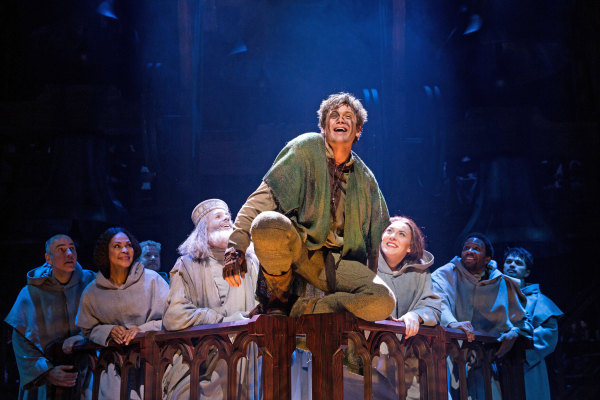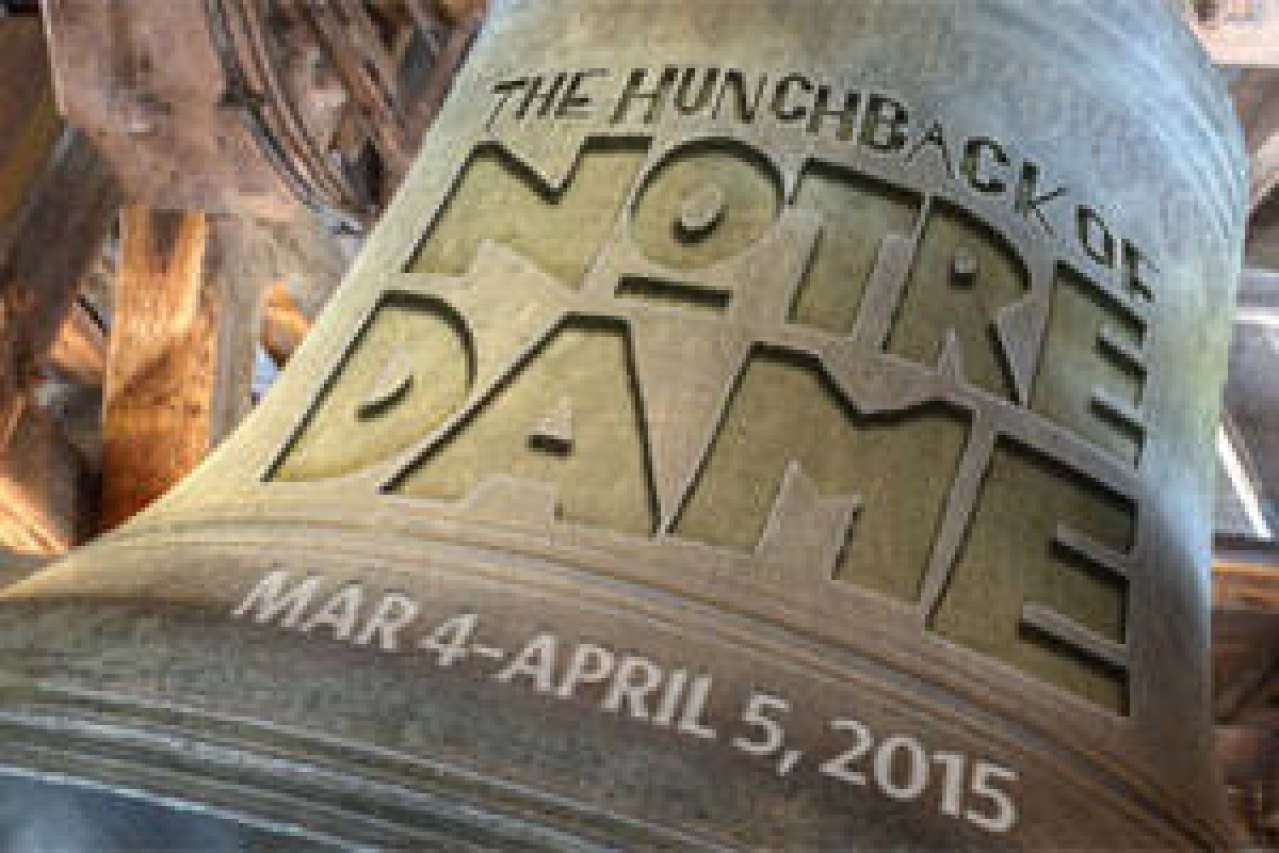The Hunchback of Notre Dame

(© Matthew Murphy)
The darkness of Victor Hugo meets the melodiousness of Disney in the new stage musical adaptation of The Hunchback of Notre Dame, now in its Paper Mill Playhouse incubation tube (a world-premiere coproduction with La Jolla Playhouse). The combination is already a proven success, judging by the popularity of the Disney's 1996 animated film, from which the production borrows much of its score, famously penned by Alan Menken and Stephen Schwartz. However, while the plot and overall aesthetic were given a thorough Disney makeover for the film, the stage version has leaned in the Hugo direction, but with a hint of apology that keeps it in a state of unsettled limbo.
The colors of Alejo Vietti's costumes are muted and gothic, like the novel's tragic characters. Set designer Alexander Dodge has built an impressive homage to the Parisian cathedral with a stained-glass centerpiece, ornate wooden beams holding stone gargoyles, and a monstrous system of bells that descend from the rafters. The booming voices from the Continuo Arts Symphonic Chorus fill the corners of the massive space as they launch us into the monastic opening number, "The Bells of Notre Dame," which lays the foundation for the ensuing story. Here, we meet the stern Dom Claude Frollo — played by Patrick Page with his typical imposing presence and unmistakable baritone. In strict accordance with church conduct, Frollo indirectly causes his philandering brother to be banished from their religious sanctuary along with his gypsy mistress. Both he and the gypsy die, but not before leaving their deformed child in the hands of a grieving Frollo, who, out of spite, names the young boy Quasimodo ("half-formed") and locks him away in the Notre Dame bell tower.
Director Scott Schwartz paints with a distinctly theatrical brush, with narration from members of the company and an onstage transformation by our title Hunchback, Michael Arden. As he enters the stage for the first time, he slings a hump over his shoulder, throws on the signature green tunic, and contorts his face and body for all the audience to see. The compelling approach often takes on an enticing tone of Shakespearean fable, but director Schwartz never fully commits to the style. The piece waffles between this form of self-conscious play-acting and a slightly murkier version of the traditional Disney-onstage musical, with the narrations intermittently disappearing and dramatic moments being unexpectedly diluted.
The tonal inconsistencies expose the seams between the lighter material from the animated musical and the heavier German musical Der Glöckner von Notre Dame that composer Menken, lyricist Schwartz, and Tony-winning book writer James Lapine premiered in Berlin in 1999. Peter Parnell, the show's current book writer, gets stuck between these two tenors, with brief smatterings of humor appearing at random within the gothic story. The gargoyles, who served as the film's comic relief, are now subdued to a series of stoic and characterless chorus members dressed in uniform gray robes. And yet, "Topsy Turvy," the most tragic of the film's production numbers illustrating Quasimodo's first fateful outing into the streets of Paris (with energetic choreography by Chase Brock), is not taken to the heightened levels of drama it could be within this new theatrical context.
Even within what often seems like two warring productions, the cast delivers a group of top-notch performances with vocal perfection. Arden never hits a wrong note in the inspiring ballad "Out There," while climbing up and down set pieces, and maneuvers his character — which in this rendition is partially deaf and dumb — with nuance and delicacy. Page maintains our empathy as the villainous Frollo even in his show-stopping fire-and-brimstone song "Hellfire," portraying a damaged soul, torn between the church and the love he carries for his deceased brother. Andrew Samonsky, meanwhile, brings his beautiful tenor to the role of Captain Phoebus de Martin, though a little too much melodrama makes its way into his presentation as the story's primary love interest.
Phoebus is the lucky front-runner among the intoxicating gypsy Esmeralda's three suitors — the perpetually friend-zoned Quasimodo and the predatory Archdeacon Frollo completing the contentious square that composes the show's central controversy. It's difficult to imagine anyone better suited for the role of Esmeralda than triple-threat Ciara Renée, whose strength as a performer and vocal technician makes us all moths to her flame. Her performance of "God Help the Outcasts" leaves no saccharine aftertaste — just a poignant impression.
If the creative team decides just which of their two potential productions they'd like to perform, they have a cast that's ready to go.











